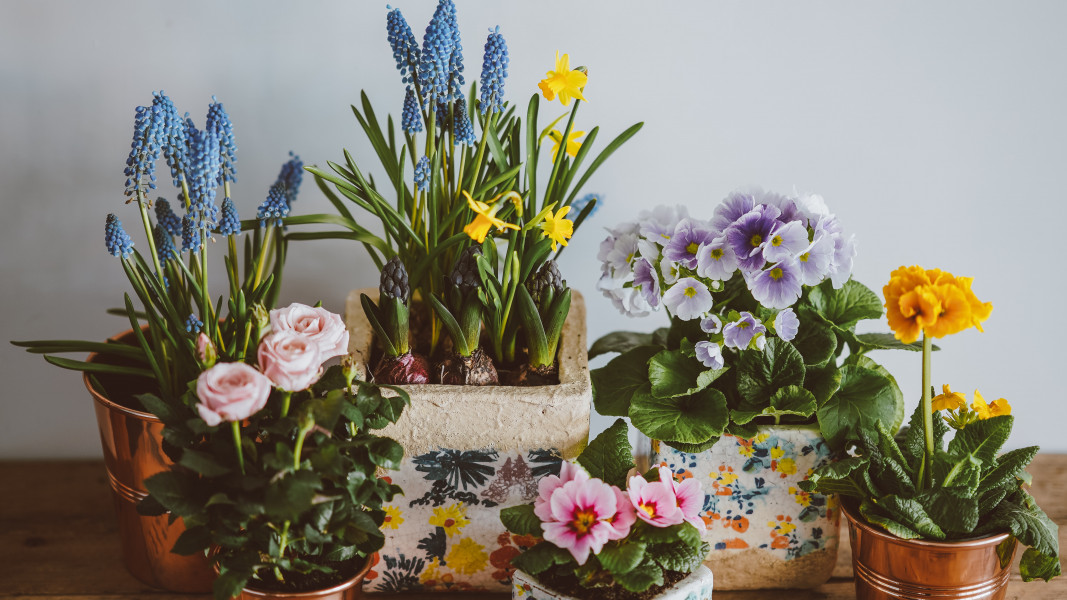Proper Planting and Care of Hyacinths
A bulbous plant known as a hyacinth can be grown successfully both indoors and outdoors. Because of this, many novice flower growers choose to grow this bloom on their window so they can admire it even in the chilly winter months. This want is entirely feasible. Hyacinth cultivation, however, requires the establishment of acceptable conditions that closely approximate garden settings and the provision of adequate care.
Follow these 3 steps:
- Choice of bulbs. Prior to planting, you must select the right planting medium. Use bulbs with a minimum diameter of 2 inches is advised. because a huge bulb makes it simpler to develop a complete plant. A little bulb needs to be kept firm and free from rot or damage because it may shed leaves but still fail to bloom. Additionally, using a disinfectant right before planting is advised.
- Choosing a pot. The proper vessel must then be selected. It ought to be shallow and wide. Drainage holes must be present in the pot.
- Soil preparation. The soil can be purchased or created on your own. To accomplish this, combine grass, compost, leaf soil, humus, and small amounts of sand and peat in equal parts.
When cultivating hyacinths at home, there is one restriction: they cannot bloom repeatedly. Artificial forcing, which weakens the bulbs, encourages flowering. So that they can get through the healing period, they should be put in the garden after 1-2 years.
How to Care for Hyacinth at Home?
You must take care of flowers if you want them to grow big, stunning blooms. How can a hyacinth be taken care of at home to blossom as soon as possible and give the owners joy for a long time with lovely flowers? Hyacinth maintenance is straightforward and consists of three major elements:
- Watering;
- Good lighting;
- Fertilizer
Watering. The effective watering is the cornerstone of hyacinth maintenance in space. The soil must be moist, thus it must be constantly watched to ensure that it doesn't dry out, and the plant must be watered as needed. When an organism is growing, blooming, or hibernating, this requirement is crucial. For this plant, stagnant water can cause a fungus infection and is also harmful. As a result, you must make sure that any extra water gets into the tank and that it is drained afterwards. Watering just needs to be done to slightly hydrate the soil; care must be taken to avoid getting water on the buds, onions, or leaf axils. For this purpose, it is recommended to pour water into the edge of the pot or into the pan.
Good lighting. It is occasionally required to rotate the bloom in relation to the lighting in different planes. This encourages even plant development. Fluorescent lights can also be used to further illuminate the plant at night and on overcast days. Without light, the plant may dry up and lose its leaves and tender buds.
Fertilizer. Hyacinths should ideally be fed twice a month. For this, special fertilizers are used, which should be diluted according to their instructions.
Adapting Hyacinths to Live Indoors
The hyacinth's ability to time its flowering with a specific season or holiday is a good trait. Hyacinths are distilled at home for this.
It is of three types:
- Early - the bulbs are planted in October, and the hyacinth blooms until the New Year;
- Average - planting takes place in November, and flowering falls in late January - early February;
- Late - Plant the bulbs in December or January to enjoy the flowers in March or April.
The average time from planting to flowering is 2.5 to 3 months. Hyacinths need to go through a series of preparation stages with a steady drop in air temperature in order to be safely forced at home. They should be kept after digging for two weeks in a warm, humid environment with an air temperature of + 82– 86°F. They are then kept in a cool environment with a temperature of +72 to 77°F for two weeks. Additionally, circumstances are made even colder for 2 weeks (+ 59–62°F). The bulbs are then prepared to be sown in a pot.
Reproduction of Hyacinths at Home
Children (daughter bulbs), which are carefully segregated from the adult bulb, are how hyacinths reproduce. The mother bulb can give birth to a maximum of four babies in a year due to the delayed nature of natural division. Because of this, hyacinths are reproduced artificially in floriculture at home. They employ certain methods like cutting and cutting the bottom in order to swiftly obtain a big number of kids.
The bulbs are treated with a 1% solution of potassium permanganate before artificial reproduction begins, and they are then dried for a period of two to three days at a temperature of 68 to 73°F.
Cutting the bottom. After a period of relaxation, this method is used. Carefully cut the bottom of the bulbs with a teaspoon before storing them in boxes with the bottoms cut off at an air temperature of at least +70°F. 20–40 tiny babies start to form on the plots after around two to three months. The bulb is inserted into a chilly greenhouse after the children appear. The newborn bulbs start to erupt their first leaves and grow. They are dug up, divided, and planted for cultivation after the growing season. The mature bulbs release their first flower stalks after three to four years.
Cutting the bottom. In contrast to the previous procedure, this one makes 2-4 cuts through the bottom that are between 0.2 and 0.3 inches deep. The first method's processing and storage requirements are still in place. The number of kids (8–15) drops off using this strategy, but they get bigger and stronger. In this scenario, the cultivation period is shortened to 2–3 years. Hyacinth cultivation is a relatively easy but highly effective procedure. You'll need a lot of drive and a little bit of patience to finish it. You will notice a noticeable improvement if you observe all the guidelines and instructions for growing and caring for hyacinths indoors.

